COVID cases are rising to “very high” levels in 27 states, says the Centers for Disease Control and Prevention, as a summer wave envelops much of America. The agency measures COVID activity in wastewater. This method of surveillance has become crucial as it can detect rising infection rates earlier than clinical testing.
“If you just talk about infections, this is probably going to end up becoming the largest summer wave we’ve had,” Dr. Ashish Jha, dean of the Brown University School of Public Health and former White House COVID-19 response coordinator, told NBC News.
Currently, the KP.3.1.1 variant is the leading cause of COVID infections in the United States, responsible for over a quarter of new cases. Together, KP.3.1.1 and its sister KP.3 strain account for nearly half of all infections. Here are the 27 states where COVID levels are “very high.”
RELATED: The Small Symptoms People “Never Think of as COVID,” Doctors Share
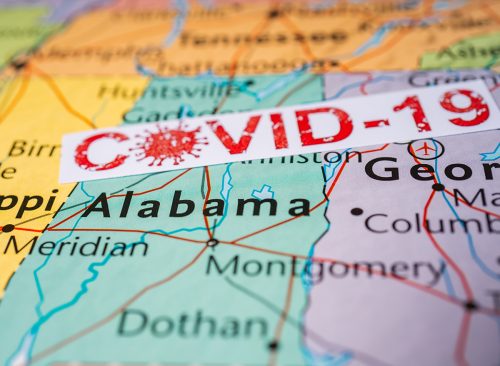
“A wave of summertime COVID is here. The Alabama Department of Public Health said there’s been some evidence of that,” reports WAAY. “Dr. Wes Stubblefield, a medical officer with ADPH, said current COVID numbers appear to be climbing.” “Some parts of the U.S. have seen some increases in the number of hospitalizations and the number of positive tests that are being reported regionally. There has been some evidence that there’s been some kind of summertime COVID wave,” Stubblefield told the network.
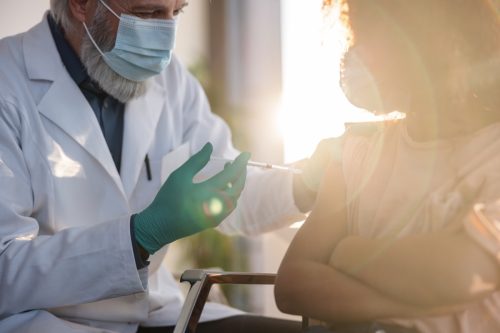
“Alaska is experiencing a summer COVID wave, fueled by the new so-called ‘FLiRT variants,’ new Omicron variants of the COVID-19 virus,” reports KTOO. “Joe McLaughlin, an epidemiologist with the state’s division of public health, said the wave is partly due to waning immunity. He said only about 18% of Alaskans got a COVID vaccine this past year.” “Anytime you get these variants that are driving the wave, typically, what’s happening is they’ve had some sort of a mutation, at least one or a couple, that typically will give them the capability to evade prior immunity better than other strains that are circulating,” McLaughlin told the network.
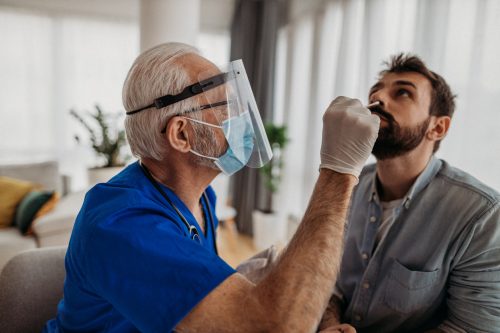
“For the week ending July 27, the CDC reported that 16.3 percent of all COVID tests performed in the U.S.—excluding at-home test results—were coming back positive, representing a 2 percent increase from the previous week,” reports Newsweek. “Coming in at number one with the highest percentage of positive tests was region six, which encompasses Arkansas, Louisiana, New Mexico, Oklahoma and Texas.”
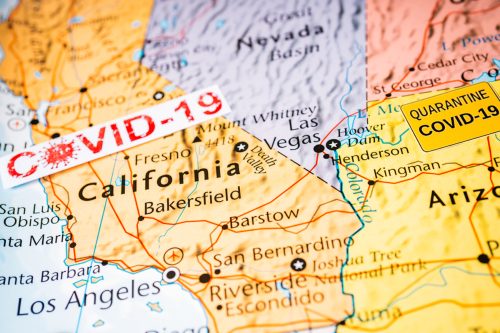
“California’s strongest summer COVID wave in years is still surging, and an unusual midsummer mutation may be partly to blame,” reports the LA Times. “Of particular concern is the rise of a hyperinfectious subvariant known as KP.3.1.1, which is so contagious that even people who have eluded infection throughout the pandemic are getting sick.”
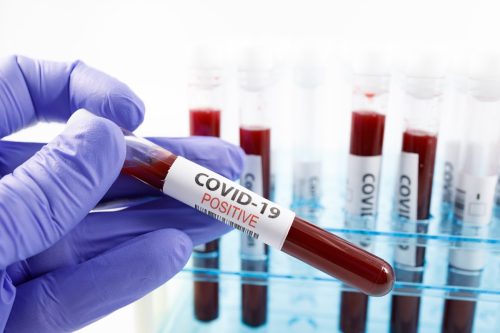
“We’re definitely seeing a lot more positive cases for COVID right now than you would expect for a summer-cold kind of time period,” Dr. Carrie Horn, chief medical officer for National Jewish Health, told KDVR, which added: “Horn said the crud going around could be COVID-19, and people with it may not know it.”
RELATED: New COVID Shots Recommended Amid Summer Surge—When and Where to Get Yours
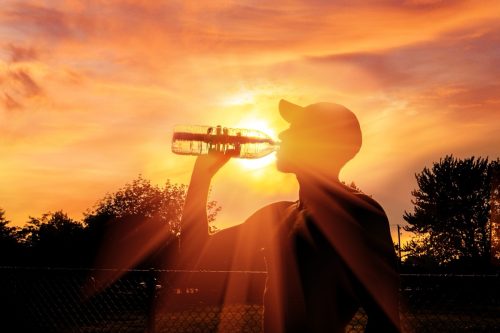
Why are cases spiking in Florida? “First of all, our historic temperatures have been forcing people inside in close proximity, which leads to disease spread. In addition, the family of variants that are currently circulating, known as FLiRT variants, tend to evade vaccine-induced immunity better,” Libby Richards of Purdue University told Action News Jax. “Kids tend to not be very good at handwashing, but they are very good at putting their hands and other objects in their mouths,” Richards added.
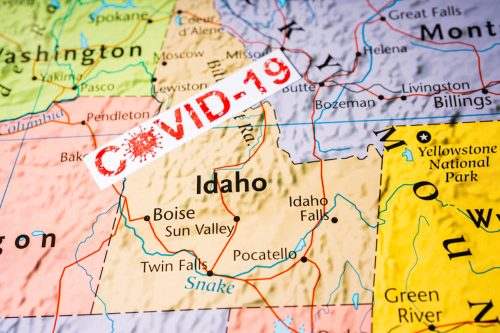
“Boise is seeing the highest levels of COVID-19 in its wastewater since a big spike in January,” reports the Idaho Statesman. “The surge follows a nationwide trend as cases creep up across the country. Infection rates in Idaho have been steadily rising since May, prompting some concern from public health officials as people travel for vacations and gather for summertime barbecues and other events. Record-breaking heat and wildfire smoke have also swamped the Treasure Valley for weeks, driving residents indoors and into air-conditioned, smoke-free spaces.”
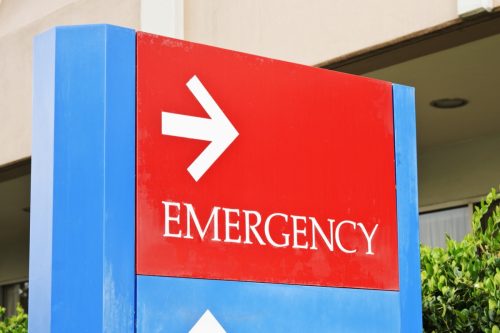
“COVID-19 is on the rise in Missouri and nationwide, according to wastewater surveillance and hospital testing data from the U.S. Centers for Disease Control & Prevention,” reports The Kansas City Star. “Hospitals are also noticing an uptick in positive cases nationwide. Emergency departments were diagnosing around 1.3% of their patients with COVID-19 as of July 6 — the highest levels since the first week of March. And a whopping 11% of highly precise NAAT tests, which are usually used in medical settings, were coming back positive nationwide as of the same date, giving the first week of July the third-highest test positivity rate recorded this year.”
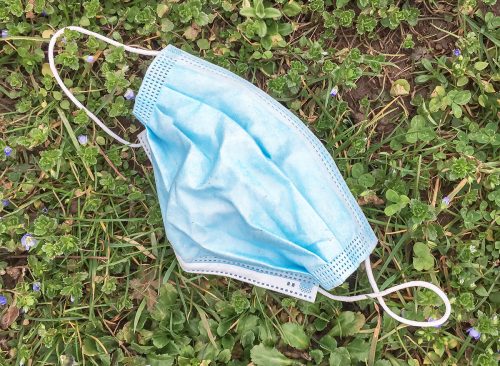
“A COVID-19 summer surge continues to mount in Louisiana, according to the latest federal data. Louisiana has the second-highest level of COVID-19 in wastewater in the country, behind only Utah,” reports NOLA.com. “Four years after the first COVID-19 cases were announced in the state, Louisiana has retired some of the tools for tracking the spread of the virus. Mask-wearing, regular testing and sanitizing efforts have also fallen by the wayside. However, rising wastewater levels, hospitalizations and emergency room visits for cold-like symptoms show that COVID is still a presence.”

One Maine doctor is choosing to look on the bright side. “Dr. Puthiery Va, director of the Maine CDC, said the uptick is somewhat expected. She said COVID has followed a predictable pattern that includes a summer surge, and travel is a likely factor,” reports Maine Public. “This is reassuring, is that the degree of impact on how sick people are getting, and are dying, is much, much lower than those earlier surges,” she said. “And I think that’s worth reiterating.”
RELATED: Doctors Have 3 Big Concerns About the Summer COVID Surge

“The summer surge in COVID cases has arrived in Maryland. The strain that is currently most contagious evolved from the Omicron variant,” reports CBS News. “The virus is still here and it is going to wax and wane and just because people are not dying in droves doesn’t mean that people aren’t still dying and a lot of Americans are dying of COVID, and most of it can be prevented,” Dr. Miriam Alexander with LifeBridge Health told the network.

“Minnesota’s rate of transmission is based on tests conducted at 31 wastewater treatment sites,” reports the local Patch. “With fresh cases bubbling up, particularly the southwestern U.S., health officials are recommending that all Americans get a new vaccination this fall.”
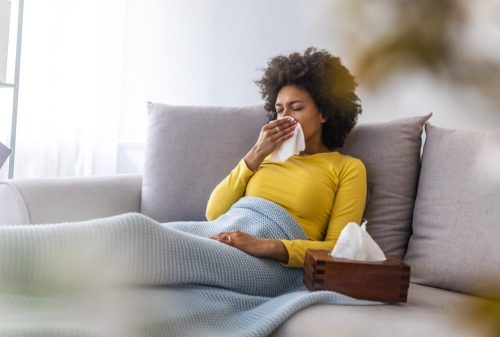
“Mississippi health officials say they have been responding to a COVID surge for the past few weeks. One physician assistant said the symptoms of this new variation of the virus are different than usual, which is stopping many from realizing they have COVID,” reports WAPT.

“In Howell County,” Howell County Health Department Administrator Chris Gilliam said “sewer samples show Omicron is still the superior variant in the area, but Dr. Larry Jennings believes there is a chance the FLiRT variant could be starting to make its way into the Ozarks,” according to KY3.

“What heat is doing is, everybody stays indoors in a crowded area, aggregated area. What you’re going to definitely see is a huge, bigger spread. It’s an opportunity for spread,” said Dr. Anil Mangla, director of the Southern Nevada Health District’s Disease Surveillance and Control Division, according to the Review Journal.
RELATED: Doctor Issues Warning as Measles Hits 3 New States: “Easier to Get Than COVID”
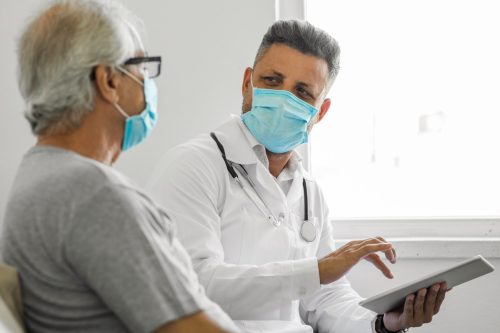
Dr. Benjamin Chan, the New Hampshire state epidemiologist, said to WMUR: “COVID-19 virus activity, and hence the risk to people, goes up starting in the summertime, maybe dips a little bit or plateaus, and then goes even higher during the wintertime,” Chan said. “And so, those are the key times when people should take steps to protect themselves.”
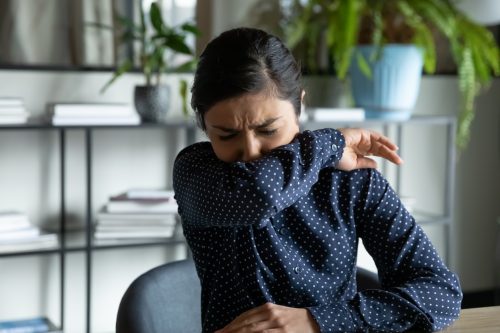
New Mexico is experiencing a significant rise in COVID cases due to the highly contagious KP.3.1.1 variant. This surge is part of a broader summer wave impacting many states across the U.S., driven by increased indoor activities during extreme heat and waning immunity from previous vaccinations.

“If you’ve noticed more people around you getting sick, it’s because the number of COVID-19 infections is going up,” reports WXII. “In fact, the Centers for Disease Control and Prevention reports 45 states are seeing an increase in cases, including North Carolina and Virginia.”
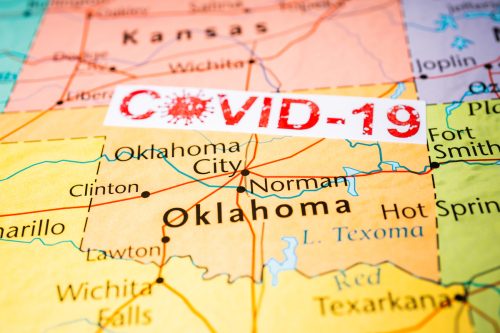
“So far this summer, COVID-19 variants are still on the rise in Oklahoma, the Centers for Disease Control and Prevention warns, and updated vaccines are recommended,” reports the Oklahoman. “In early June, an advisory panel for the Federal Drug Administration decided that new vaccines coming in the fall should focus on the KP.2 strain of the JN.1 variant.”
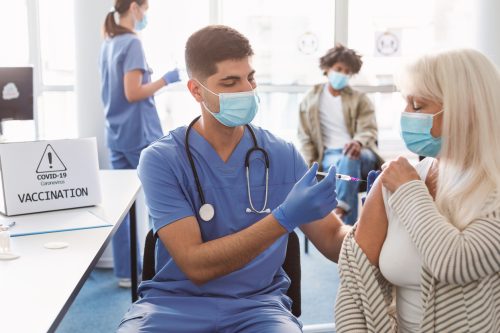
“Heads up to everybody. COVID is circulating again and a new vaccine will come out this fall that will help you get some protection,” Lane County Senior Public Health officer Dr. Patrick Leudtke said to KLCC. “But, we’re gonna have more cases, unfortunately. How many we don’t know, but we’re going to have more.”
RELATED: 7 Symptoms That Are Usually COVID, Not Allergies, Doctors Say
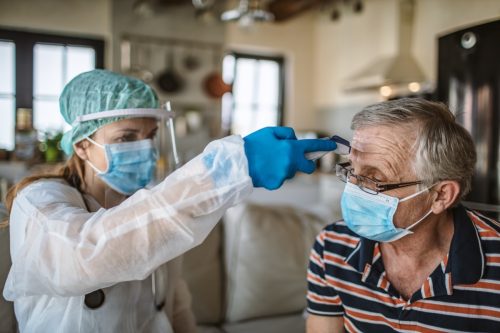
“What struck me is, in all of our sites, we’ve now surpassed the proportion we saw in the winter surge, which I don’t think I’ve ever seen before. Usually, the winter is a much worse wave than what we see in the summertime. This is a wide-scale increase in the incidence of COVID,” Michael Sweat, Ph.D., leader of the Medical University of South Carolina’s COVID-19 tracking team told Medical University of South Carolina.
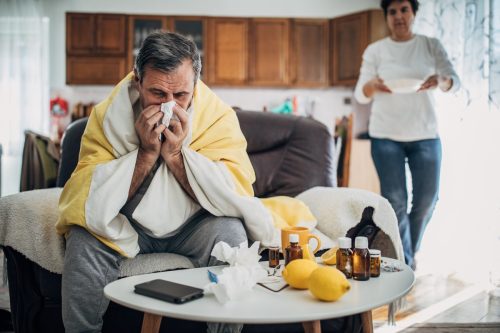
“With news strains of COVID-19 and the flu hitting West Tennessee there is urgent concern for what to do to stay proactive in overall health and wellness. COVID-19 infections are growing across the majority of the United States in more than 30 states including Tennessee,” reports WBBJ.
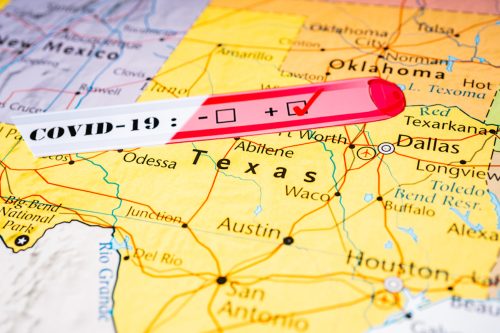
“The coronavirus is spreading again in Dallas,” reports Dallas News. “In recent weeks, the area has seen an increase in reported cases of COVID-19 and increased levels of the virus in wastewater. The spread is part of an annual summer wave, according to doctors and officials, and there are many ways to protect against infection amid the uptick in cases.”

“JN.1 and KP variants are the predominant strains in Utah, Josh Benton, a respiratory disease epidemiologist at the Utah Department of Health and Human Services,” told Axios.
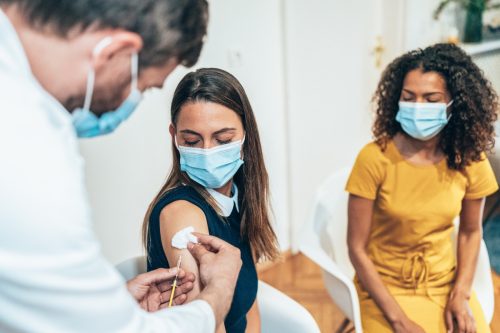
“Cases of COVID-19, the scourge of our nation and the planet, tick up around the commonwealth. It’s become a rite of the season, as common as antsy kids, forever-running air conditioning and respites at the beach,” reports Virginia Mercury. “We should get used to the seasonal increase in infections and protect ourselves as best as possible. That means: boosting our vaccines – or getting an initial one if we’ve stubbornly refused; practicing good hygiene, including washing our hands frequently; staying home if sick; and testing to detect infections.”
RELATED: Doctor Reveals the COVID Symptoms That Show Up Before You Test Positive

“COVID-19 infections, emergency department visits and hospitalizations are rising in Washington this summer — but most of the state’s residents have yet to get the most updated vaccine booster for the disease,” reports the Washington State Standard. “Even at this point in the pandemic, COVID carries a higher risk of mortality than influenza,” Dr. Eric Chow, chief of communicable disease epidemiology and immunizations for Seattle & King County’s public health department, told them. “Before the pandemic, we were already concerned about the risk of death for influenza, but now we have COVID circulating along with it.”

“Wyoming has the lowest percentage of its population aged 18 years and older to have been vaccinated against infection with the SARS-CoV-2 virus, according to data from the CDC collected and compiled by Zinda Law Group. In evaluating the difference among the 50 states, researchers at the firm suggest they could be attributed to a number of factors, including ‘access to healthcare, vaccine availability, and varying public confidence in the vaccine itself,'” reports Patient Care.

“Though the current strain is the most contagious in the nation, the symptoms are the same as previous strains, such as body aches, congestion, coughing, and fatigue,” reports CBS News. There may be some slight differences. “Normally, when we are seeing COVID, it would be low-grade or high-grade fever, headaches,” said physician assistant Gabriel Ibarra to WAPT. “This variant is a little different. We have been seeing a little more chills, nasal congestion, but the sore throat is the key.”
“Avoiding crowded indoor areas, wearing a mask, and avoiding those who are sick with COVID are all ways to prevent catching the new FLiRT variant, health officials have said,” summarizes Patch.
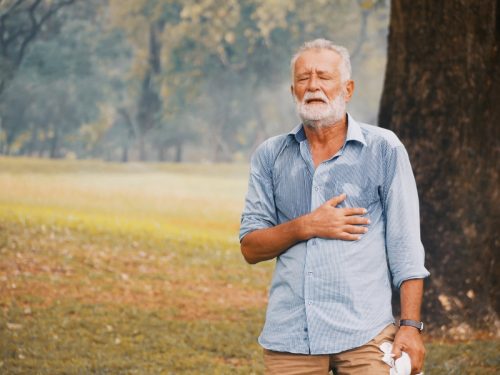
“It’s hard to predict the future. And if COVID has taught is anything, it’s that things can always change. But based on previous trends, where we have seen sort of a summer wave that has peaked around July or August, is what we might expect for this year,” said Aron Hall, deputy director for science in the CDC’s Coronavirus and Other Respiratory Viruses Division, to CBS News.
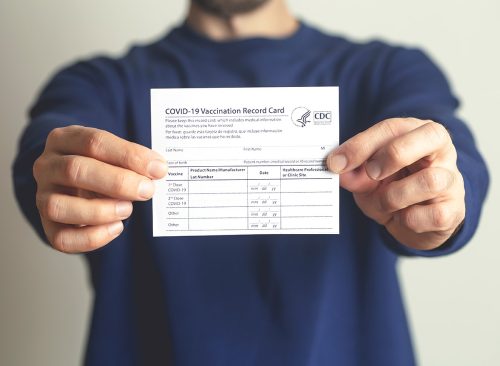
Keep your COVID vaccine up to date. “Updated COVID vaccines are set to be available this fall, according to federal health authorities. The U.S. Food and Drug Administration recommended that vaccine manufacturers formulate shots based on the KP.2 strain, an offshoot of the omicron variant that is currently estimated to make up about 6% of cases,” says ABC News.
